Listric Fault
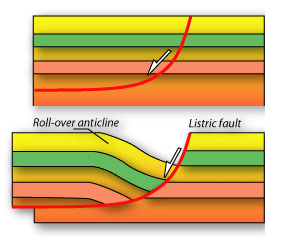 The second main type of faults found in extensional regimes, listric faults can be defined as curved normal faults in which the fault surface in concave upwards; its dip decreases with depth. These faults also occur in extension zones where there is a main detachment fracture following a curved path rather than a planar path. Hanging wall blocks may either rotate and slide along the fault plane (eg slumps), or they may pull away from the main fault, slipping instead only along the low dipping part of the fault. Roll-over anticlines will often form between bedding planes and the main fault plane as a result of the flexing between the two.
The second main type of faults found in extensional regimes, listric faults can be defined as curved normal faults in which the fault surface in concave upwards; its dip decreases with depth. These faults also occur in extension zones where there is a main detachment fracture following a curved path rather than a planar path. Hanging wall blocks may either rotate and slide along the fault plane (eg slumps), or they may pull away from the main fault, slipping instead only along the low dipping part of the fault. Roll-over anticlines will often form between bedding planes and the main fault plane as a result of the flexing between the two.
Burrowing animals may have been key to stabilizing Earth’s oxygen
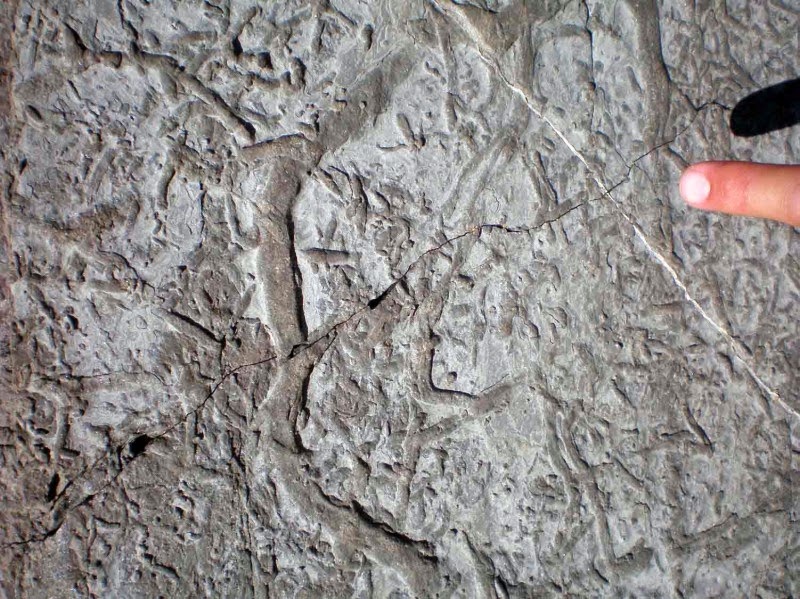
Around 540 million years ago, the first burrowing animals evolved. When these worms began to mix up the ocean floor’s sediments (a process known as bioturbation), their activity came to significantly influence the ocean’s phosphorus cycle and as a result, the amount of oxygen in Earth’s atmosphere.
“Our research is an attempt to place the spread of animal life in the context of wider biogeochemical cycles, and we conclude that animal activity had a decreasing impact on the global oxygen reservoir and introduced a stabilizing effect on the connection between the oxygen and phosphorus cycles,” says lead author Dr. Richard Boyle from the Nordic Center for Earth Evolution (NordCEE) at the University of Southern Denmark.
The computer modelling study by Dr. Richard Boyle and colleagues from Denmark, Germany, China and the UK, published in Nature Geoscience, links data from the fossil record to well established connections between the phosphorus and oxygen cycles.
Marine organic carbon burial is a source of oxygen to the atmosphere, and its rate is proportional to the amount of phosphate in the oceans. This means that (over geologic timescales) anything that decreases the size of the ocean phosphate reservoir also decreases oxygen. The study focuses on one such removal process, burial of phosphorus in the organic matter in ocean sediments.
The authors hypothesize the following sequence of events: Around 540 million years ago, the evolution of the first burrowing animals significantly increased the extent to which oxygenated waters came into contact with ocean sediments. Exposure to oxygenated conditions caused the bacteria that inhabit such sediments to store phosphate in their cells (something that is observed in modern day experiments). This caused an increase in phosphorus burial in sediments that had been mixed up by burrowing animals. This in turn triggered decreases in marine phosphate concentrations, productivity, organic carbon burial and ultimately oxygen. Because an oxygen decrease was initiated by something requiring oxygen (i.e. the activity burrowing animals) a net negative feedback loop was created.
Boyle states: “It has long been appreciated that organic phosphorus burial is greater from the kind of well oxygenated, well-mixed sediments that animals inhabit, than from poorly mixed, low oxygen “laminated” sediments. The key argument we make in this paper is that this difference is directly attributable to bioturbation. This means that (1) animals are directly involved in an oxygen-regulating cycle or feedback loop that has previously been overlooked, and (2) we can directly test the idea (despite the uncertainties associated with looking so far back in time) by looking for a decrease in ocean oxygenation in conjunction with the spread of bioturbation. My colleague, Dr Tais Dahl from University of Copenhagen, compiled data on ocean metals with oxygen-sensitive burial patterns, which does indeed suggest such an oxygen decrease as bioturbation began — confirming the conclusions of the modelling. It is our hope that wider consideration of this feedback loop and the timing of its onset, will improve our understanding of the extent to which Earth’s atmosphere-ocean oxygen reservoir is regulated.”
Co-author Professor Tim Lenton of the University of Exeter adds: “We already think this cycle was key to helping stabilise atmospheric oxygen during the Phanerozoic (the last 542 million years) — and that oxygen stability is a good thing for the evolution of plants and animals. What is new in this study is it attributes the oxygen stabilisation to biology — the presence or absence of animals stirring up the ocean sediments.”
Earlier this year, researchers from the Nordic Center for Earth Evolution showed that early animals may have needed surprisingly little oxygen to grow, supporting the theory that rising oxygen levels were not crucial for animal life to evolve on Earth.
Journal Reference:
R. A. Boyle, T. W. Dahl, A. W. Dale, G. A. Shields-Zhou, M. Zhu, M. D. Brasier, D. E. Canfield, T. M. Lenton. Stabilization of the coupled oxygen and phosphorus cycles by the evolution of bioturbation. Nature Geoscience, 2014; DOI: 10.1038/ngeo2213
Note : The above story is based on materials provided by University of Southern Denmark.
History of fire and drought shapes the ecology of California, past and future
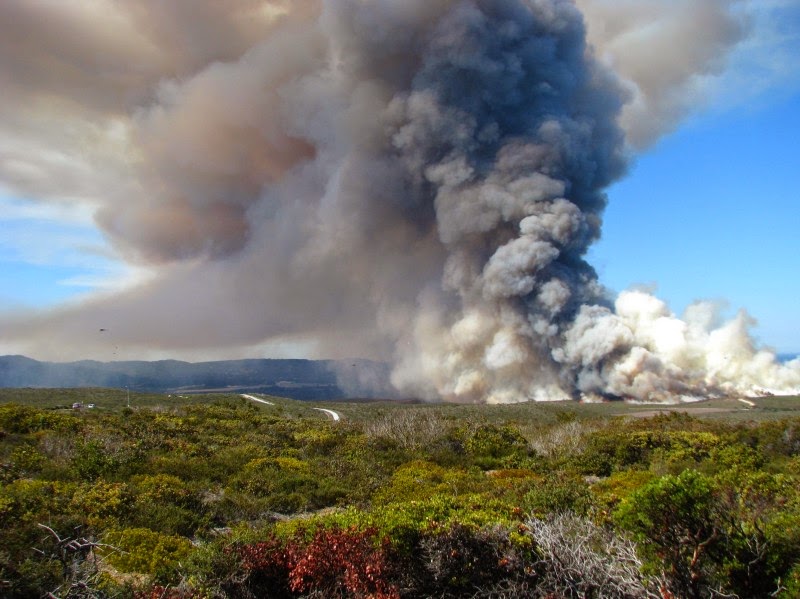
Fire season has arrived in California with vengeance in this third year of extended drought for the state. A series of large fires east of Redding and Fresno, in Yosemite, and on the Oregon border prompted Gov. Jerry Brown to declare a state of emergency on Sunday, August 3rd.
As force of destruction and renewal, fire has a long and intimate history with the ecology of California. Ecological scientists will discuss aspects of that history in detail at the upcoming 99th Annual Meeting of the Ecological Society of America on August 10 — 15th, 2014.
“Big fires today are not outside the range of historical variation in size,” said Jon Keeley, an ecologist based in Three Rivers, Cal., with the U.S. Geological Survey’s Western Ecological Research Center, and a Fellow of the Ecological Society.
Keeley will present research on the “association of megafires and extreme droughts in California” at the Annual Meeting as part of a symposium on understanding and adapting to extreme weather and climate events.
He will synthesize his research on the history of wildfire across the entire state, contrasting historical versus contemporary and forested versus non-forested patterns of wildfire incidence. He and his colleagues reviewed Forest Service records dating to 1910, as well as a wealth of newspaper clippings, compiled by a Works Progress Administration archival project, that stretch back to the middle of the last century.
Understanding historical fire trends, Keeley said, means recognizing that when we talk about wildfire in California we are talking about two very different fire regimes in two different ecosystems: the mountain forests and the lower elevation chaparral, oak woodlands, and grasslands.
The chaparral shrublands of southern California, and similar sagebrush ecosystems in the Great Basin, are not adapted to the kind of frequent fire typical of the mountain conifer forests in California. Fires in the lower elevation ecosystems are always crown fires, which kill most of the vegetation. In the millennia before humans arrived, these ecosystems burned at intervals of 100 to 130 years.
These lower elevation ecosystems experienced unprecedented fire frequency in the last century, with fire returning to the same area every 10 to 20 years, altering the ecology of the landscape.
“In Southern California, lower elevation ecosystems have burned more frequently than ever before. I think it’s partly climate, but also people starting fires during bad conditions,” Keeley said. Bad conditions include extended droughts and dry fall days when the Santa Ana winds blow through the canyons.
In high elevation conifer forests, spring temperatures and drought are strongly correlated with fire, and Keeley thinks climate change and management choices are likely playing a role in current trends. But in the hotter, drier valleys and foothills cloaked in grass, oak, and chaparral, human behavior dominates. Through arson or accident, in southern California, over 95% of fires are started by people, according to Cal Fire.
“Climate change is certainly important on some landscapes. But at lower elevation, we should not be thinking just about climate change,” said Keeley. “We should be thinking about all global change.” Land use change and population growth create more opportunities for fires to start.
The high frequency of fire has instigated a persistent switch from chaparral to grass in some areas. Frequent fire favors quick germination and spread of forbs and grasses. Most grasslands in California are not native.
Since the more recent arrival of immigrants from Europe and Asia, several of the exotic grasses they brought with them from the Old World have been quick to capitalize on the opportunities presented by fires to spread invasively throughout roughly a quarter of chaparral country. To Keeley, this means that prescribed fires in lower elevation ecosystems now have entirely different consequences for the regional ecology than they did when native Californian peoples set fires to manipulate resources.
“When the Native Americans did it, they did not affect native species so much, because native perennial bunchgrass and other herbaceous species grew in,” said Keeley. “Once the aliens got here, it completely changed.”
Note : The above story is based on materials provided by Ecological Society of America.
Yukon River
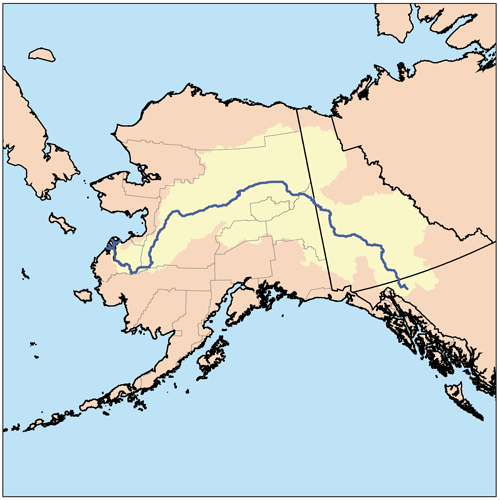
The Yukon River is a major watercourse of northwestern North America. The source of the river is located in British Columbia, Canada. The next portion lies in, and gives its name to Yukon. The lower half of the river lies in the U.S. state of Alaska. The river is 3,190 kilometres (1,980 mi) long and empties into the Bering Sea at the Yukon-Kuskokwim Delta. The average flow is 6,430 m³/s (227,000 ft³/s). The total drainage area is 832,700 km² (321,500 mi²), of which 323,800 km² (126,300 mi²) is in Canada. By comparison, the total area is more than 25% larger than Texas or Alberta.
The longest river in Alaska and Yukon, it was one of the principal means of transportation during the 1896–1903 Klondike Gold Rush. A portion of the river in Yukon—”The Thirty Mile” section, from Lake Laberge to the Teslin River—is a national heritage river and a unit of Klondike Gold Rush International Historical Park. Paddle-wheel riverboats continued to ply the river until the 1950s, when the Klondike Highway was completed. After the purchase of Alaska by the United States in 1867, the Alaska Commercial Company acquired the assets of the Russian-American Company and constructed several posts at various locations on the Yukon River.
The Russians named the Yukon River, believing that “yuk-khana” was a Deg Xinag phrase meaning big river. However, “yuk-khana” is not a Deg Xinag phrase meaning big river. Probably, the Deg Hit’an borrowed the name from an upriver language and borrowed the “big river” meaning from the Central Yup’ik name. Most likely, Yukon was derived from an obsolete Gwich’in word, which included the concept of long water or wide water, but did not mean “big” river or “great” river. The Lewes River is the former name of the upper course of the Yukon, from Marsh Lake to the confluence of the Pelly River at Fort Selkirk.
The Yukon River has had a history of pollution from gold mining, military installations, dumps, wastewater, and other sources. However, the Environmental Protection Agency does not list the Yukon River among its impaired watersheds, and water quality data from the U.S. Geological Survey shows relatively good levels of turbidity, metals, and dissolved oxygen.
The Yukon River Inter-Tribal Watershed Council, a cooperative effort of 70 First Nations and tribes in Alaska and Canada, has the goal of making the river and its tributaries safe to drink from again by supplementing and scrutinizing Government data.
Course
The generally accepted source of the Yukon River is the Llewellyn Glacier at the southern end of Atlin Lake in British Columbia. Others suggest that the source is Lake Lindeman at the northern end of the Chilkoot Trail. Either way, Atlin Lake flows into Tagish Lake (via the Atlin River), as eventually does Lake Lindeman after flowing into Bennett Lake. Tagish Lake then flows into Marsh Lake (via the Tagish River). The Yukon River proper starts at the northern end of Marsh Lake, just south of Whitehorse. Some argue that the source of the Yukon River should really be Teslin Lake and the Teslin River, which has a larger flow when it reaches the Yukon at Hootalinqua. The upper end of the Yukon River was originally known as the Lewes River until it was established that it actually was the Yukon. North of Whitehorse, the Yukon River widens into Lake Laberge, made famous by Robert W. Service’s “The Cremation of Sam McGee”. Other large lakes that are part of the Yukon River system include Kusawa Lake (into the Takhini River) and Kluane Lake (into the Kluane and then White River).
The river passes through the communities of Whitehorse, Carmacks, (just before the Five Finger Rapids) and Dawson City in Yukon, and crossing Alaska into Eagle, Circle, Fort Yukon, Stevens Village, Rampart, Tanana, Ruby, Galena, Nulato, Grayling, Holy Cross, Russian Mission, Marshall, Pilot Station, St. Marys (which is accessible from the Yukon at Pitkas Point), and Mountain Village. After Mountain Village, the main Yukon channel frays into many channels, sprawling across the delta. There are a number of communities after the “head of passes,” as the channel division is called locally: Nunum Iqua, Alakanuk, Emmonak, and Kotlik. Of those delta communities, Emmonak is the largest with roughly 760 people in the 2000 census. Emmonak’s gravel airstrip is the regional hub for flights.
Geography and ecology
Some of the upper slopes of this watershed (e.g. Nulato Hills) are forested by Black Spruce. This locale near the Seward Peninsula represents the near westernmost limit of the Black Spruce, Picea mariana, one of the most widespread conifers in northern North America.
Note : The above story is based on materials provided by Wikipedia
Transformation of the underworld: Humanity’s deepest footprint
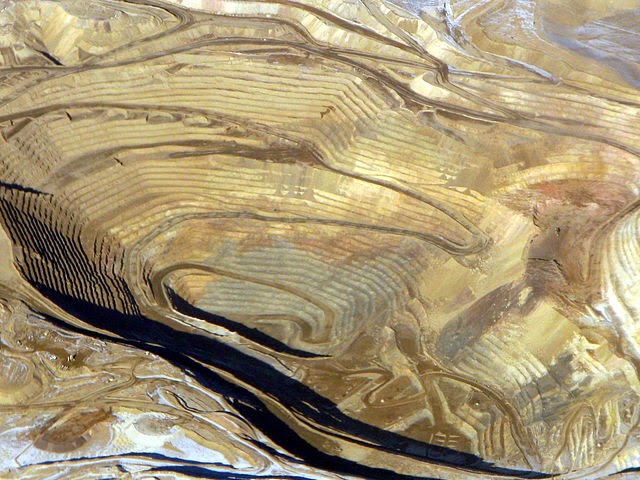
Humans have left many kinds of mark on the planet, but some of the most remarkable and enduring are in the subterranean ‘underworld’ of rocks, hidden deep below our feet.
It’s a world that’s usually out of sight and out of mind — but it’s one where humans have created true geological novelties that have been studied extensively by Dr Jan Zalasiewicz and Professor Mark Williams of the University of Leicester, together with Dr Colin Waters of the British Geological Survey in a new paper published in the academic journal Anthropocene.
Among these observable novelties are the effects of human drilling on the geological ‘underworld’ that exists underfoot.
Dr Zalasiewicz explained: “Human drilling into the Earth’s crust to extract minerals or store wastes may be regarded as ‘anthroturbation’, comparable to the burrows made by worms and other animals but on a vastly greater scale.
“Anthroturbation has created textures and structures underground that are unique within the animal world. No other organism has made igneous and metamorphic rocks — and yet we have made many tons of these in underground nuclear tests, in shock-fracturing and by melting the rock around the blast.”
Anthroturbation commonly extends to several kilometres depth, as compared to the few centimetres or metres that non-human organisms achieve.
Examining the effects of human drilling shows how humans have left their mark on Earth both above the surface and deep below in the subterranean network of human-made tunnels in ways that will have a long-standing impact in the future.
Professor Williams added: “Many of these underground transformations, being beyond the reach of surface erosion, will effectively last forever. They can be preserved for millions and even billions of years into the future, and thus may form our most enduring — and most puzzling — legacy, for any intelligent creatures that may inherit the Earth from us.”
Journal Reference:
Jan Zalasiewicz, Colin N. Waters, Mark Williams. Human bioturbation, and the subterranean landscape of the Anthropocene. Anthropocene, 2014; DOI: 10.1016/j.ancene.2014.07.002
Note : The above story is based on materials provided by University of Leicester.
Study of aerosols stands to improve climate models
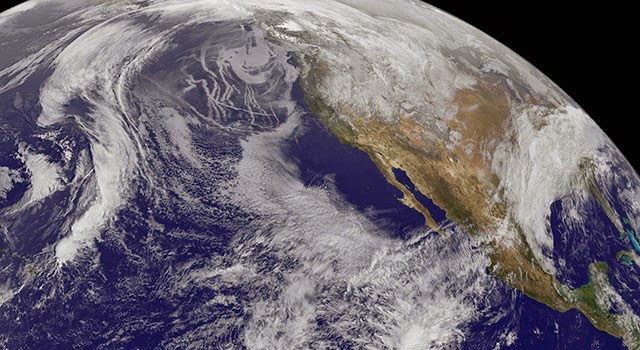
Of all the factors that influence Earth’s changing climate, the effect that tiny particles in Earth’s atmosphere called aerosols have on clouds is the least well understood. Aerosols scatter and absorb incoming sunlight and affect the formation and properties of clouds. Among all cloud types, low-level clouds over the ocean, which cover about one-third of the ocean’s surface, have the biggest impact on the albedo, or reflectivity, of Earth’s surface, reflecting solar energy back to space and cooling our planet.
Now a new, comprehensive global analysis of satellite data led by Yi-Chun Chen, a postdoctoral fellow at NASA’s Jet Propulsion Laboratory, Pasadena, California, and a joint team of researchers from JPL and the California Institute of Technology in Pasadena, has quantified how changes in aerosol levels affect these warm clouds over the ocean. The findings appeared Aug. 3 in the advance online version of the journal Nature Geoscience.
Changes in aerosol levels have two main effects — they alter the amount of clouds in the atmosphere and change their properties. Water vapor condenses on aerosol particles into cloud droplets or cloud ice particles, so higher levels of aerosols mean more clouds. With regard to cloud properties, increased aerosol levels can either increase or decrease the amount of liquid water in clouds, depending on whether the clouds are raining or not, the stability of the atmosphere and humidity levels in the upper troposphere. The team analyzed 7.3 million individual data points from multiple satellites in the international constellation of Earth observing satellites known as the Afternoon Constellation, or A-Train, from August 2006 to April 2011 to provide the first real estimate of both effects.
The researchers found each effect to be of similar magnitude — that is, changing the amount of the clouds and changing their internal properties are both equally important in their contribution to cooling our planet. Moreover, they found that the total impact from the influence of aerosols on this type of cloud is almost double that estimated in the latest report of the United Nations’ Intergovernmental Panel on Climate Change.
“These results offer unique guidance on how warm cloud processes should be incorporated in climate models with changing aerosol levels,” said John Seinfeld, the Louis E. Nohl professor and professor of chemical engineering at Caltech.
The study is funded by NASA and the Office of Naval Research.
NASA monitors Earth’s vital signs from land, air and space with a fleet of satellites and ambitious airborne and ground-based observation campaigns. NASA develops new ways to observe and study Earth’s interconnected natural systems with long-term data records and computer analysis tools to better see how our planet is changing. The agency shares this unique knowledge with the global community and works with institutions in the United States and around the world that contribute to understanding and protecting our home planet.
For more information, visit: http://www.caltech.edu/content/study-aerosols-stands-improve-climate-models
For more information about NASA’s Earth science activities in 2014, visit: http://www.nasa.gov/earthrightnow
Note : The above story is based on materials provided by NASA/Jet Propulsion Laboratory.
How long does it take to make a natural fracture?
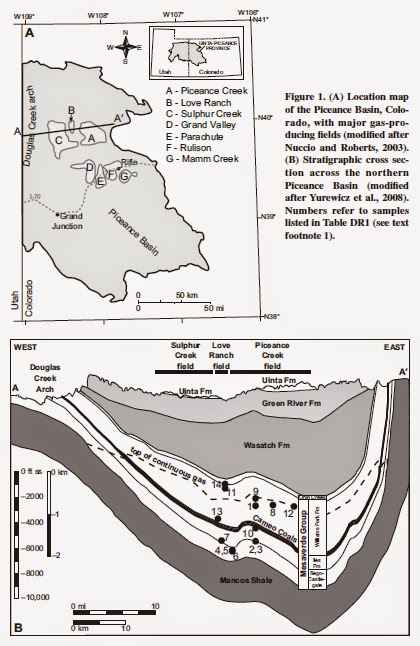
How long does it take for natural Earth processes to form hydraulic fractures? Is the formation driven by sediment compaction, oil and gas generation, or something else? What role do these natural fractures play in modern hydraulic fracturing production? A new GSA BULLETIN study by András Fall and colleagues from The University of Texas at Austin, Virginia Tech, and ExxonMobil addresses these questions, and the article is open-access online.
The process of fracture formation by a natural increase in pore-fluid pressure has previously been referred to as natural hydraulic fracturing. Researchers work to understand these fractures through examination of fluid inclusions trapped in minerals within the fractures. In this study, Fall and colleagues conclude that natural hydraulic fractures formed over time spans of 33 to 35 million years, driven by the slow generation of natural gas.
Natural fractures provide important pathways for the flow of water, natural gas, and oil in geologic formations, including unconventional tight-gas sandstone oil and gas reservoirs targeted for production by hydraulic fracturing. These fractures play an essential role during well completion and production by connecting pores in the reservoir rock storing oil and gas to the hydraulic fracture and wellbore that allow production. “Sweet spots,” or zones of higher than average permeability, have been attributed to the presence of these open fractures.
Successful prediction of zones of increased fracture abundance provides an opportunity to minimize drilling and completion costs as well as the environmental footprint of production. Successful prediction of natural fracture occurrence and their hydraulic properties requires models of fracture formation that are based on realistic mechanical, hydraulic, and chemical principles that can be tested against core, well-log, and production data.
Journal Reference:
A. Fall, P. Eichhubl, R. J. Bodnar, S. E. Laubach, J. S. Davis. Natural hydraulic fracturing of tight-gas sandstone reservoirs, Piceance Basin, Colorado. Geological Society of America Bulletin, 2014; DOI: 10.1130/B31021.1
Note : The above story is based on materials provided by Geological Society of America.
Old evidence leads to new ideas about earthquake hazards in Pacific Northwest

Gary Griggs began studying sediment deposits on the deep-sea floor off the Oregon coast in 1965 as a graduate student in oceanography at Oregon State University. Now, almost 50 years later, Griggs is a distinguished professor of Earth and planetary sciences and director of the Institute of Marine Sciences at UC Santa Cruz, and the sediment cores he collected as a grad student have led geologists to rethink their ideas about earthquake hazards in the Pacific Northwest.
It wasn’t until 1990 that the distinctive sediment layers Griggs and his colleagues observed were recognized as evidence of massive earthquakes that occurred centuries ago. A new study published July 29 in Geology reexamines that evidence and its implications.
“Science has come a long way in the past half century. When I was a graduate student we didn’t have the benefit of plate tectonics and no understanding of the potential for big earthquakes in that area,” said Griggs, a coauthor of the new paper.
The report focuses on the Cascadia subduction zone—a giant active fault that slants eastward beneath the Pacific coast of southern British Columbia, Washington, Oregon, and northern California. The lead author is Brian Atwater of the U.S. Geological Survey, an expert on Cascadia earthquakes who contacted Griggs several years ago to learn more about the sediment cores he had collected as a graduate student.
Geologic studies in the past three decades have provided increasingly specific estimates of Cascadia earthquake sizes and repeat times. The estimates affect public safety through seismic provisions in building design and tsunami limits on evacuation maps. At issue is not whether the Cascadia subduction zone produces enormous earthquakes repeatedly. It is widely held, for instance, that the zone last ruptured along most of its 700-mile length in January 1700, in an earthquake of estimated magnitude 9. The new report does not question this consensus. What the report asks instead is how much geologists can say, with confidence, about Cascadia earthquake history before 1700.
“The question is whether we get magnitude 8 earthquakes every 300 years or magnitude 9 earthquakes every 500 years, and that’s important because it’s been over 300 years since the last very large quake and tsunami,” Griggs said. “It may be more complicated than people once thought to determine exactly when those past earthquakes occurred.”
The new report reappraises sediment cores that were collected near the foot of the continental slope offshore Washington. Several cores from this area underpin influential estimates of Cascadia earthquake size and recurrence that were published in 2012. The new report points to confounding evidence from a much larger suite of cores that were collected and first analyzed in the late 1960s and early 1970s, including those collected by Griggs.
At that time, plate tectonics was such a new idea that scientists were just beginning to recognize the Cascadia subduction zone as a tectonic plate boundary. The sediment cores were collected to learn about turbidites—beds of sand and mud laid down by bottom-hugging, sediment-driven currents that infrequently emerged from submarine canyons onto the deep ocean floor. Not until a 1990 report would turbidites be reinterpreted as clues to Cascadia earthquake history.
The new report asks how well geologists have managed to read this earthquake history. Which earthquakes represent long ruptures and which represent sequential, shorter breaks? Do earthquakes happen more often here than there? The report concludes that extracting such details from turbidites at Cascadia is more complicated than was previously thought.
For Griggs, the new developments show how important it is to keep good research records. “Even if you don’t have the answer at the time, if you do careful work others can come along later and reevaluate the evidence in the light of new models and understanding,” he said.
Note : The above story is based on materials provided by University of California – Santa Cruz
Shell clusters reveal Pilbara’s cyclone past
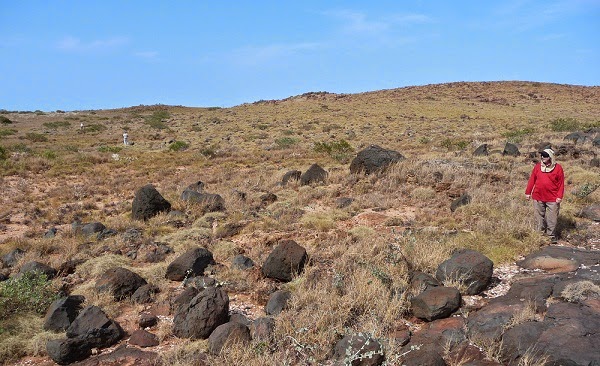
Evidence showing tsunamis or other waves caused by cyclones have previously reached more than 10m above sea level in WA, has raised questions about the capacity of coastal infrastructure according to a study of the Pilbara coast.
The study used historic deposits of shells and other skeletal material—called wrack lines because they occur in distinct bands—to identify high water levels up to 2500 years ago.
The research team examined wrack lines at 26 sites spread over 375km of coast and found six sites had shell deposits more than 8m above sea level. Three reached 10m above sea level.
Damara WA coastal engineer and paper co-author Matt Eliot, says it is unclear whether the biggest waves were tsunamis or were caused by tropical cyclones.
Generally, high water marks less than 4.5m above sea level are attributed to moderate storm surges and high tides, high water marks between 4.5m and 7.5m are attributed to extreme tropical cyclones combined with a high tide, and high water marks above 7.5m are attributed to tsunamis.
But Matt Eliot says the nature of tropical cyclones means they can also cause massive waves.
“We were really interested in trying to use the physical patterns of the wrack lines because a cyclone should have a directional focus and be spatially less coherent than a tsunami,” he says.
“What we’ve found is that the nature of the wrack lines and their reworking actually means that even if a tsunami was far more coherent, the signature is decayed sufficiently over time or by the landforms themselves that it will resemble a cyclone anyhow.”
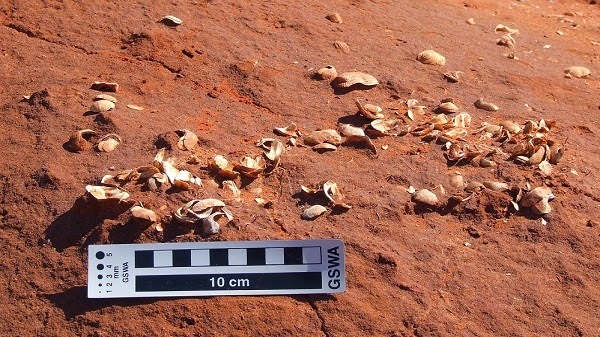
Matt Eliot, his father Ian Eliot (also from Damara WA) and their colleague John Dodson initially discovered the wrack lines while they were working on a contract for an oil and gas company.
Much of the infrastructure in the Pilbara, including Karratha and Port Hedland, is built on low-lying plains or close to shore and the study reported that the implications of extreme high water events may have not been fully considered in the design of this infrastructure.
Ian Eliot says a giant wave could have a huge economic impact on WA.
“You could use Varanus Island as a model—a gas explosion on the island cost a large part of the WA economy at the time and therefore had a big impact on the rest of Australia,” he says.
“Imagine one of these extremely high waves directly hitting a highly vulnerable part of the Pilbara coast.”
More information:
John Dodson, Ian Eliot, Matthew Eliot, Catherine Chagué-Goff, James Goff, “Wrack line signatures of high-magnitude water-level events on the northwest Australian coast,” Marine Geology, Volume 355, 1 September 2014, Pages 310-317, ISSN 0025-3227, dx.doi.org/10.1016/j.margeo.2014.06.013.
Note : The above story is based on materials provided by Science Network WA
How do you make a bird? Shrink a dinosaur for 50 million years

(Reuters) – Large flesh-eating dinosaurs evolved into small flying birds, but it did not happen overnight.
An international team of scientists on Thursday described an extraordinary evolutionary process that unfolded over a period of 50 million years in which a lineage of carnivorous dinosaurs shrank steadily and acquired numerous traits that led to the first appearance of birds.
The researchers, using techniques developed by molecular biologists to reconstruct virus evolution, examined 1,500 anatomical traits in 120 different dinosaurs from the theropod group. These bipedal meat-eaters included giants like Tyrannosaurus rex and Giganotosaurus as well as the lineage that produced birds.
“Our study measured the rate of evolution of different groups of theropod dinosaurs,” said lead researcher Michael Lee, a paleontologist at the University of Adelaide and the South Australian Museum.
“The fastest-evolving group also happened to be ancestral to birds. So, ultimately, the most adaptable dinosaurs proved to be the best long-term survivors, and surround us today in their feathered splendor,” Lee explained.
The earliest known bird was the crow-sized Archaeopteryx, which lived in Germany 150 million years ago. It was characterized by primitive traits like teeth, a long bony tail and the absence of a bony, keeled sternum where flight muscles attach, as well as some attributes shared with modern birds.
“What was impressive was the consistency of the size change along the dinosaur-to-bird transition – every descendent was smaller than its ancestor. The lineage was continually pushing the envelope of life at a smaller body size, little by little, over 50 million years,” Lee said.
The researchers completed a family tree of this dinosaur lineage and their bird descendants. These dinosaurs decreased in size from about 440 pounds (200 kg) to 1.7 pounds (0.8 kg) in 12 discernible steps.
Aside from sustained miniaturization, this lineage also benefited from new traits such as feathers, wishbones, wings, shorter snouts and smaller teeth. The study found that this lineage acquired evolutionary adaptations at a rate four times faster than other dinosaurs.
“The dinosaurs most closely related to birds are all small, and many of them – like the aptly named Microraptor – had some ability to climb and glide,” said study participant Gareth Dyke, a paleontologist at Britain’s University of Southampton.
The decrease in body size may have helped dinosaurs in the lineage that evolved into birds to take advantage of certain ecological niches that would have been off-limits to their larger relatives and to experiment with unique body shapes.
“It would have permitted them to chase insects, climb trees, leap and glide, and eventually develop powered flight,” Lee said.
The changes may have helped these creatures to survive the cataclysm that doomed the other dinosaurs – an asteroid that struck Earth 65 million years ago, Lee said. Flight, for example, would have allowed them to cover vast territory in search of suitable habitat, and warm-bloodedness would have buffered them against climate changes, he said.
The study was published in the journal Science.
Note : The above story is based on materials Reporting by Will Dunham; Editing by Gunna Dickson “Reuters”
Researchers practice living on Mars – without leaving Earth

(Reuters) – For the past four months, a team of researchers have been living in a mockup Mars habitat on a Hawaiian volcano practicing isolated living on the Red Planet.
For the most part, expedition leader Casey Stedman and his five crewmates have stayed inside their 1,000-square foot (93-square meter) solar-powered dome, venturing out only for simulated spacewalks and doing so only when fully attired in mock spacesuits.
“I haven’t seen a tree, smelled the rain, heard a bird, or felt wind on my skin in four months,” Stedman wrote in a blog on Instagram. Stedman is a U.S. Air Force Reserve officer, graduate student at Embry-Riddle Aeronautical University Worldwide.
“We are simulating a long-duration mission on Mars, with a focus on crew psychology in isolation,” the crew said during an online interview with Reddit on Sunday.
Crewmembers, who include a NASA chemical engineer and a neuropsychologist at the Fort Wayne Neurological Center in Indiana, have been isolated from direct human contact and have been eating dehydrated and shelf-stabilized foods.
“We’ve basically been subsisting on mush. Flavorful mush, but mush nonetheless,” crewmember Ross Lockwood wrote on Instagram. Lockwood is finishing a doctorate in physics at the University of Alberta.
The habitat, which is outfitted with waterless composting toilets, is basically self-sustaining except for a water resupply and wastewater recovery every two- to three weeks.
Communications with the outside world have been time-delayed to match the 20-minute travel time of radio waves passing between Earth and Mars. In addition to a battery of daily psychological surveys, the researchers tend to science projects and other studies, including expeditions outside the habitat to scout Mars-like features on Hawaii’s Mauna Loa volcano. The landscape is similar to a region on Mars known as Tharsis. For fun, there are movies, board games and exercise, Lockwood told Reddit.
“We don’t have a lot of spare time, but I count work as part of the fun as well. Planning EVAs (spacewalks), preparing food, even chores – these are all enjoyable activities,” he said.
The operational part of the Hawaii Space Exploration Analog and Simulation mission, known as Hi-SEAS 2, wraps up on Friday, but it will take months to synthesize all the findings.
The point of the project is to create guidelines for future missions to Mars, the long-term goal of the U.S. human space program.
“Hopefully, when we send humans to Mars, we will have done enough missions like HI-SEAS that we’ll remember to bring the really important stuff, like extra toilet paper,” mission support team member Gary Strawn said on Reddit.
The simulation, which is funded by NASA and overseen by the University of Hawaii, began on March 28.
Note : The above story is based on materials provided by Irene Klotz “Reuters”
Australian volcanoes form case study for dating technique
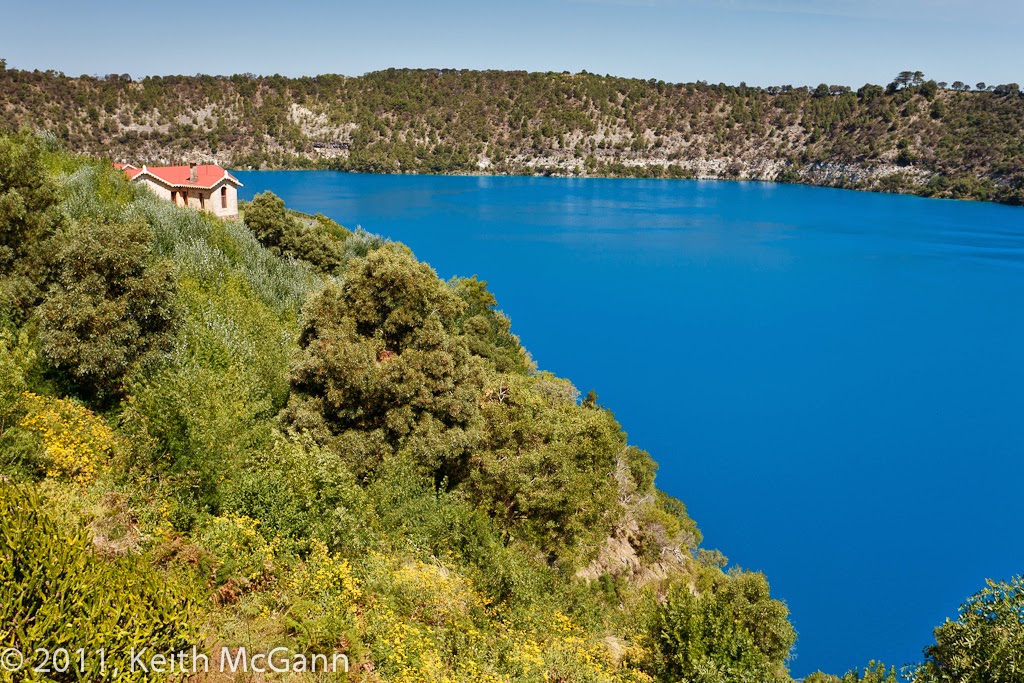
Volcanos in south-eastern Australia are still considered active, and a PhD candidate is hoping to determine whether we might expect more eruptions any time soon.
The Newer Volcanics Province includes more than 400 volcanoes, stretching from the Central Highlands north of Melbourne to South Australia’s Mount Gambier district.
Curtin University Geologist and PhD candidate Korien Oostingh says it is a very young geological province.
“It started erupting 4.6 million years ago and the last eruption [at Mount Gambier] is actually thought to have been witnessed by Aboriginal people around 5,000 years ago,” she says.
She is using the province as a case study as she develops a new technique that makes use of cosmogenic radiation for dating purposes.
Ms Oostingh has travelled to many locations throughout the Newer Volcanics Province, collecting samples that she is subjecting to tests at Curtin University’s Argon Laboratory.
“I’m looking at olivine in basalts,” she says.
“Part of the calcium in olivine will be converted into an isotope of Argon, [Argon 38] that we can measure here for the first time quite reliably in Curtin University.
“I will also combine that with chemistry data on the rocks from the new volcanic province so that I can look at some trends in the area and hopefully answer two big questions.
“One of them is if we can expect new eruptions in an area in the near future.
“Also, where the basalts were actually coming from at some point, so what is the source in the deep sub-surface?”
The province is more than 2000km from the edge of the Australian tectonic plate.
Ranging theories behind region’s volcanic activity
She says there are two current hypotheses proposed to explain this “intra-plate” volcanism.
“One possibility is that it is caused by the principle of a mantle plume,” she says.
“A mantle plume is rising magma from very deep in the earth—a little bit like if you are making a soup, the very hot material in the middle starts to rise.
“Very hot magma rises in pockets and it all starts to rise to the surface and creates a volcanic province or volcano.
“Some other people propose some local inhomogeneities in the underlying mantle.”
Ms Oostingh says she is not yet inclined to support either hypothesis.
“I am hoping to gain completely new data and to put forward my own model, I will do some advanced modelling here,” she says.
Note : The above story is based on materials provided by Science Network WA
Mysterious Siberian hole likely due to methane buildup and release
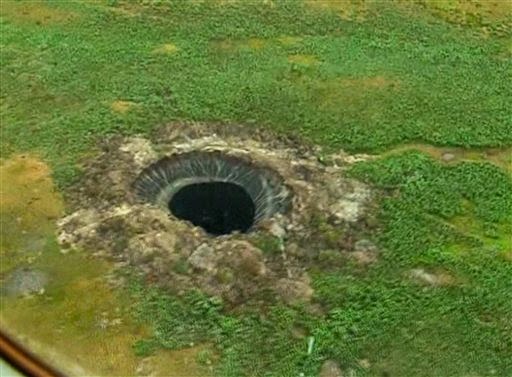
A team of Russian researchers who visited the site of one of the mysterious holes that have appeared in the ground in parts of Siberia is theorizing that the likely cause is methane buildup and release, the journal Nature is reporting.
Last month reindeer herders in the Yamal Peninsula in Siberia came across a mysterious hole in the ground—after reporting what they’d discovered, a helicopter was dispatched and personnel aboard took snapshots of what was found. The photos have since gone viral on the Internet generating speculation about what caused the hole to come about—some suggested it was nothing more than a meteor crater or sinkhole, others seemed convinced it was part of an alien invasion, while others yet postulated that it was probably the remains of a collapsed pingo (a mound of earth covered ice). Now, after visiting the site of the first hole discovered, a team of researchers has concluded that the hole, and others like it that have been spotted, are most likely due to a sudden release of methane as permafrost melts. They note Siberia has experienced extremely warm summers the past two years.
After sending a sensor down into the hole the researchers found an unusually high concentration of methane—9.6 percent, as compared to the normal 0.000179 percent. That finding and the fact that mounds of dirt near the mouth of hole indicate a blast of some sort occurred, has the researchers convinced that the warm summers caused permafrost melting which released underground methane. Gas pressure, they believe, built up to a tipping point, then was suddenly released, pushing out the material that had been sitting on top of it. Oddly, the depth of the hole is still not known. The researchers lowered a camera, but the line used was not long enough to allow for reaching the water (likely from melting permafrost) at the bottom. They estimate the depth to the water is approximately 70 meters. They would not even venture a guess as to the depth of the hole below the water.
The researchers plan a return visit to the hole to conduct more research but aren’t confident of what they will find—they note that the walls are already collapsing and water movement can be heard, suggesting that whatever evidence exists now, might be gone by the time they return.
More information:
Mysterious Siberian crater attributed to methane, Nature, DOI: 10.1038/nature.2014.15649
Note : The above story is based on materials provided by © 2014 Phys.org
Oldest rove beetle in the Omaliini tribe found in French amber
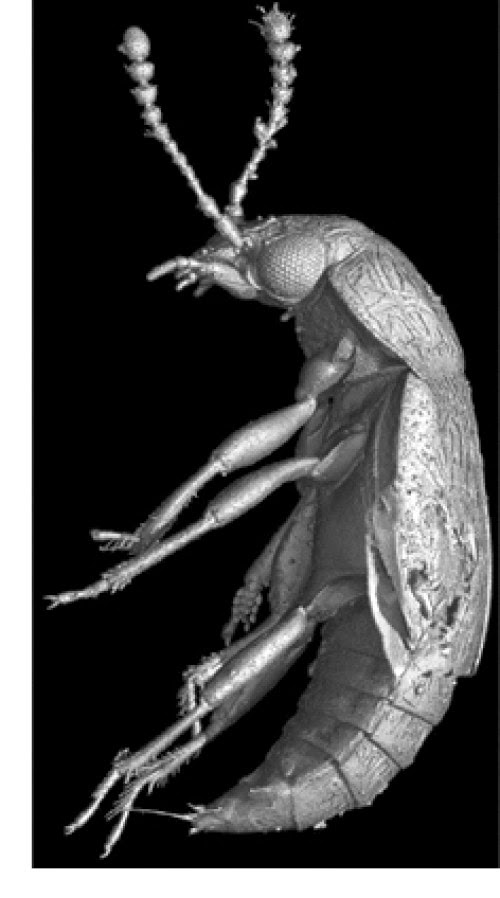
An international team of scientists from Spain, France, and the U.S. has discovered and described a rove beetle that is the oldest definitive member of the tribe Omaliini that has ever been found in amber. The discovery and description were made possible through the use of the propagation phase-contrast X-ray synchrotron imaging technique, which allows the detailed study of otherwise invisible specimens in opaque amber.
The new species is described in the journal Annals of the Entomological Society of America in an article called “Oldest Omaliini (Coleoptera: Staphylinidae: Omaliinae) Discovered in the Opaque Cretaceous Amber of Charentes.”
The tribe Omaliini belongs to the subfamily Omaliinae, which belongs to the family Staphylinidae, the largest of all of the beetle families, with more than 60,000 described species.
Two specimens of the “new” species, called Duocalcar geminum, were found in a single piece of opaque amber, along with other arthropods that were embedded in the same piece of amber.
The genus name, Duocalcar, means “two spurs” in Latin, “alluding to the two distinctive projections on each hind leg, at the trochanteral apex and near the tibial apex.” The specific epithet, geminum, is a Latin adjective meaning “twin-born,” in reference to the discovery of both specimens in the same piece of amber.
“D. geminum is the first Omaliinae described from any amber, increasing the minimum age of Omaliini to ≈100 million years, from Eocene to latest Albian,” the authors wrote.
Journal Reference:
Peris, D., Thayer, M. K., Néraudeau, D. Oldest Omaliini (Coleoptera: Staphylinidae: Omaliinae) Discovered in the Opaque Cretaceous Amber of Charentes. Annals of the Entomological Society of America, 2014 DOI: 10.1603/AN14047
Note : The above story is based on materials provided by Entomological Society of America.
Decades-old amber collection offers new views of a lost world
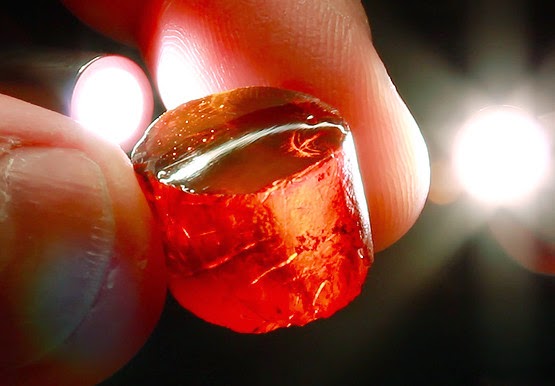
Scientists are searching through a massive collection of 20-million-year-old amber found in the Dominican Republic more than 50 years ago, and the effort is yielding fresh insights into ancient tropical insects and the world they inhabited.
When the collection is fully curated, a task that will take many years, it will be the largest unbiased Dominican amber collection in the world, the researchers report.
Perhaps the most striking discovery thus far is that of a pygmy locust, a tiny grasshopper the size of a rose thorn that lived 18- to 20-million years ago and fed on moss, algae and fungi. The specimen is remarkable because it represents an intermediate stage of evolution in the life of its subfamily of locusts (known as the Cladonotinae). The most ancient representatives of this group had wings, while modern counterparts do not. The newly discovered locust has what appear to be vestigial wings — remnant structures that had already lost their primary function.
The discovery is reported in the journal ZooKeys.
“Grasshoppers are very rare in amber and this specimen is extraordinarily well-preserved,” said Sam Heads, a paleontologist at the Illinois Natural History Survey, a division of the Prairie Research Institute at the University of Illinois.
Heads, laboratory technician Jared Thomas and study co-author Yinan Wang found the new specimen a few months after the start of their project to screen more than 160 pounds of Dominican amber collected in the late 1950s by former INHS entomologist Milton Sanderson. Sanderson described several specimens from the collection in a paper in Science in 1960, a report that inspired a generation of scientists to seek out and study Dominican amber, Heads said.
The bulk of the Sanderson amber collection remained in storage, however, until Heads uncovered it in 2010.
Heads has named the new pygmy locust Electrotettix attenboroughi, the genus name a combination of electrum (Latin from Greek, meaning “amber”) and tettix (Greek, meaning “grasshopper”). The species is named for Sir David Attenborough, a British naturalist and filmmaker (not to be confused with Richard Attenborough, David’s actor brother who appeared in the movie “Jurassic Park”).
“Sir David has a personal interest in amber, and also he was one of my childhood heroes and still is one of my heroes and so I decided to name the species in his honor — with his permission of course,” Heads said. (Attenborough narrates and appears in a new video about the Sanderson collection and the specimen that bears his name.)
The process of screening the amber is slow and painstaking. Much of the amber is clouded with oxidation, and the researchers must carefully cut and polish “windows” in it to get a good look at what’s inside. In addition to the pygmy locust, Heads and his colleagues have found mating flies, stingless bees, gall midges, Azteca ants, wasps, bark beetles, mites, spiders, plant parts and even a mammal hair.
The pygmy locust was found in a fragment that also contained wasps, ants, midges, plant remnants and fungi. Such associations are rich in information, Heads said, offering clues about the creatures’ physiological needs and the nature of their habitat.
“Fossil insects can provide lots of insight into the evolution of specific traits and behaviors, and they also tell us about the history of the time period,” Heads said. “They’re a tremendous resource for understanding the ancient world, ancient ecosystems and the ancient climate — better even, perhaps, than dinosaur bones.”
The National Science Foundation supports this work. Heads and his colleagues are digitizing the best specimens, and will upload the images onto a publicly available website.
Note : The above story is based on materials provided by University of Illinois at Urbana-Champaign.
Scientists caution against exploitation of deep ocean
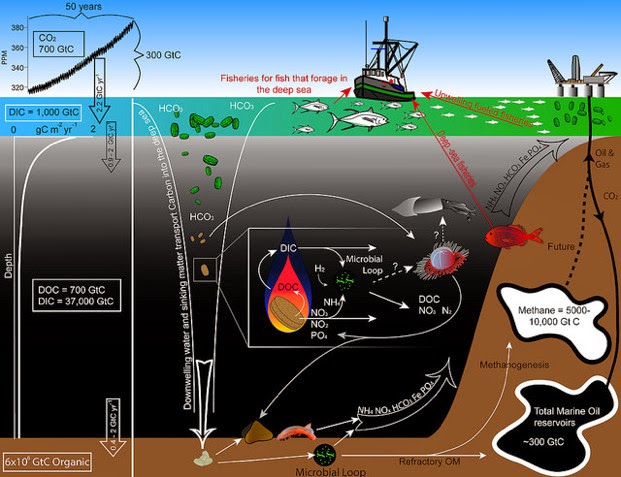
The world’s oceans are vast and deep, yet rapidly advancing technology and the quest for extracting resources from previously unreachable depths is beginning to put the deep seas on the cusp of peril, an international team of scientists warned this week.
In an analysis in Biogeosciences, which is published by the European Geosciences Union, the researchers outline “services” or benefits provided by the deep ocean to society. Yet using these services, now and in the future, is likely to make a significant impact on that habitat and what it ultimately does for society, they point out in their analysis.
“The deep sea is the largest habitat on Earth, it is incredibly important to humans and it is facing a variety of stressors from increased human exploitation to impacts from climate change,” said Andrew Thurber, an Oregon State University marine scientist and lead author on the study. “As we embark upon greater exploitation of this vast environment and start thinking about conserving its resources, it is imperative to know what this habitat already does for us.”
“Our analysis is an effort to begin to summarize what the deep sea provides to humans because we take it for granted or simply do not know that the deep sea does anything to shape our daily lives,” he added. “The truth is that the deep sea affects us, whether we live on the coast or far from the ocean — and its impact on the globe is pervasive.”
The deep sea is important to many critical processes that affect Earth’s climate, including acting as a “sink” for greenhouse gases — helping offset the growing amounts of carbon dioxide emitted into the atmosphere. It also regenerates nutrients through upwelling that fuel the marine food web in productive coastal systems such as the Pacific Northwest of the United States, Chile and others. Increasingly, fishing and mining industries are going deeper and deeper into the oceans to extract natural resources.
“One concern is that many of these areas are in international waters and outside of any national jurisdiction,” noted Thurber, an assistant professor (senior research) in Oregon State’s College of Earth, Ocean, and Atmospheric Sciences. “Yet the impacts are global, so we need a global effort to begin protecting and managing these key, albeit vast, habitats.”
Fishing is an obvious concern, the scientists say. Advances in technology have enabled commercial fisheries to harvest fish at increasing depths — an average of 62.5 meters deeper every decade, according to fisheries scientists. This raises a variety of potential issues.
“The ability to fish deeper is shifting some fisheries to deeper stocks, and opening up harvests of new species,” Thurber said. “In some local cases, individual fisheries are managed aggressively, but due to how slow the majority of the fish grow in the deep, some fish populations are still in decline — even with the best management practices.”
The orange roughy off New Zealand, for instance, is both a model of effective and conservation-based management, yet its populations continue to decline, though at a slower rate than they would have experienced without careful management, Thurber noted.
“We also have to be concerned about pollution that makes its way from our continental shelves into the deep sea,” he added. “Before it was ‘out of sight, out of mind.’ However, some of the pollution can either make it into the fish that we harvest, or harm the fishers that collect the fish for us. It is one of the reasons need to identify how uses of the deep sea in the short term can have long-term consequences. Few things happen fast down there.”
Mining is a major threat to the deep sea, the researchers point out in their analysis. In particular, the quest for rare earth and metal resources, which began decades ago, has skyrocketed in recent years because of their increased use in electronics, and because of dwindling or limited distribution of supplies on land. Mining the deep ocean for manganese nodules, for example — which are rich in nickel — requires machines that may directly impact large swaths of the seafloor and send up a sediment plume that could potentially affect an even larger area, the scientists note.
These mining resources are not limited to muddy habitats, Thurber pointed out. Massive sulfides present at hydrothermal vents are another resource targeted by mining interests.
“The deep sea has been an active area for oil and gas harvesting for many years,” he said, “yet large reservoirs of methane and other potential energy sources remain unexploited. In addition to new energy sources, the potential for novel pharmaceuticals is also vast.
“There are additional threats to these unique habitats, including ocean acidification, warming temperatures and possible changes to ocean circulation through climate change.”
The next step, the researchers say, is to attach an economic value to both the services provided by the deep sea — and the activities that may threaten those services.
“What became clear as we put together this synopsis is that there is vast potential for future resources but we already benefit greatly through this environment,” Thurber said. “”What this means is that while the choices to harvest or mine will be decided over the coming decades, it is important to note that the stakeholders of this environment represent the entire world’s population.”
“The Bible, the Koran, the Torah, and early Greek texts all reference the deep sea,” he added. “Maybe it’s time for all of us to take a closer look at what it has to offer and decide if and how we protect it.”
Note : The above story is based on materials provided by Oregon State University.
Chinese mosquitoes on the Baltic Sea
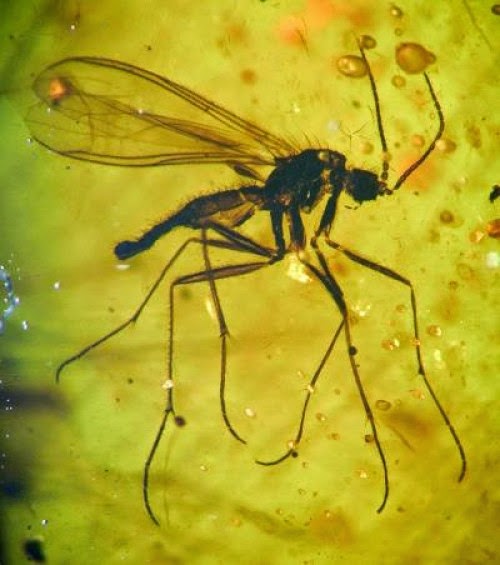
The analysis of the roughly 3,000 pieces is still in its infant stage. But it is already evident that the results will be of major significance. “Amazingly often, we are finding-in addition to Asian forms-the same insect species in Fushun amber that we found in Baltic amber,” explained Bonn paleontologist Professor Dr. Jes Rust.
The Baltic amber comes from the Baltic Sea region, which is almost 10,000 kilometers from Fushun. Sites rich in finds are, e.g., the coastal regions of Mecklenburg, Poland and Belarus. The pieces from the Baltic region are slightly younger than the ones from Fushun-according to estimates, about 40 to 50 million years. At that time, Europe and Asia were divided by the Strait of Turgay, a wide arm of the ocean. Many researchers had assumed until now that this body of saltwater prevented species migrations between the continents-or at least, made it much harder. “Consequently, the great similarity of the included insects has been a great surprise to us,” said Rust. “We don’t know yet how that fits together.”
A neglected treasure
In the vicinity of the Northeast Chinese city of Fushun, there are large lignite deposits. Humans have been digging up this fuel from the ground for more than a century already. And in doing so, they also kept finding pieces of amber. Traditionally, the locals made jewelry from it. Particularly beautiful finds with interesting inclusions are highly sought after among collectors.
Until now, the inclusions had not been studied systematically. It was the Chinese paleontologist Dr. Bo Wang who finally recognized the scientific potential of Fushun amber. Wang, who is currently at the Bonn University on a research grant from the Alexander von Humboldt Foundation, used his good contacts with institutes and collectors to start systematically cataloguing the finds. An analysis is currently underway in collaboration with paleontologists from Europe and the USA.
And it is beginning to become clear how rich this deposit is. So far, the researchers have been able to identify arachnids and insects from more than 80 families-a snapshot of the past that provides a detailed view of what tiny animals populated East Asia 53 million years ago.
In addition, the Fushun deposit is filling in one of the blank spots on the map. With the exception of India, it constitutes the only significant site where amber has been found in Asia. Rust regrets that the open pit mining in Fushun will soon stop. “But despite that, the detailed analysis of the finds will probably keep us busy for quite some time.”
Note : The above story is based on materials provided by Universität Bonn.
Shrinking dinosaurs evolved into flying birds

A new study involving scientists from the University of Southampton has revealed how massive, meat-eating, ground-dwelling dinosaurs evolved into agile flying birds: they just kept shrinking and shrinking, for over 50 million years.
Today, in the journal Science, the researchers present a detailed family tree of dinosaurs and their bird descendants, which maps out this unlikely transformation.
They showed that the branch of theropod dinosaurs, which gave rise to modern birds, were the only dinosaurs that kept getting inexorably smaller.
“These bird ancestors also evolved new adaptations, such as feathers, wishbones and wings, four times faster than other dinosaurs,” says co-author Darren Naish, Vertebrate Palaeontologist at the University of Southampton.
“Birds evolved through a unique phase of sustained miniaturisation in dinosaurs,” says lead author Associate Professor Michael Lee, from the University of Adelaide’s School of Earth and Environmental Sciences and the South Australian Museum.
“Being smaller and lighter in the land of giants, with rapidly evolving anatomical adaptations, provided these bird ancestors with new ecological opportunities, such as the ability to climb trees, glide and fly. Ultimately, this evolutionary flexibility helped birds survive the deadly meteorite impact which killed off all their dinosaurian cousins.”
Co-author Gareth Dyke, Senior Lecturer in Vertebrate Palaeontology at the University of Southampton, adds: “The dinosaurs most closely related to birds are all small, and many of them — such as the aptly named Microraptor — had some ability to climb and glide.”
The study examined over 1,500 anatomical traits of dinosaurs to reconstruct their family tree. The researchers used sophisticated mathematical modelling to trace evolving adaptions and changing body size over time and across dinosaur branches.
The international team also included Andrea Cau, from the University of Bologna and Museo Geologico Giovanni Capellini.
The study concluded that the branch of dinosaurs leading to birds was more evolutionary innovative than other dinosaur lineages. “Birds out-shrank and out-evolved their dinosaurian ancestors, surviving where their larger, less evolvable relatives could not,” says Associate Professor Lee.
Note : The above story is based on materials provided by University of Southampton.

